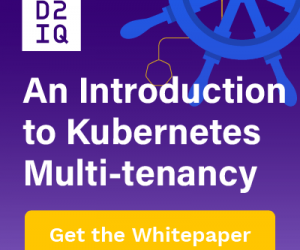
Sorry, your browser is not compatible with this application. Please use the latest version of Google Chrome, Mozilla Firefox, Microsoft Edge or Safari.
An Introduction to Kubernetes Multi-tenancy
Learn the whys and hows of Kubernetes multi-tenancy—key use cases, common challenges, and best practices.
In a multi-tenant Kubernetes architecture, multiple applications, services, workloads, or teams share a cluster’s resources. In this paper you will learn:
- Why and when your organization should consider using a multi-tenant Kubernetes architecture
- Issues and challenges that multi-tenancy can raise, including “noisy neighbors” and “nosy neighbors”
- Multi-tenant resource management and the use of quotas
- Soft and hard multi-tenancy: what they mean and how and when to use them
- Additional considerations for service providers
This paper will show that a well-developed multi-tenant strategy can drive more efficient use of infrastructure and personnel, improving ROI while still providing users with the levels of application performance, reliability, and security they require. It will also provide guidelines and best practices for implementing a successful multi-tenant strategy, maximizing efficiency and effectiveness while minimizing risk.

| Format: |
|
| Topics: | |
| Website: | Visit Publisher Website |
| Publisher: | D2iQ |
| Published: | March 15, 2021 |
| License: | Copyrighted |
| Copyright: | © 2021 D2IQ |
Featured Content

Contact Publisher


Claim Content





